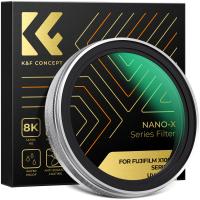What Does Glass Look Like Under A Microscope ?
Under a microscope, glass appears as an amorphous, transparent material with a smooth surface. When viewed at higher magnifications, the structure of glass may appear to have small imperfections or irregularities, but overall it will still maintain its transparent and solid characteristics.
1、 Microscopic Structure of Glass

The microscopic structure of glass is a fascinating subject that has been studied extensively by scientists and researchers. When viewed under a microscope, glass appears to have an amorphous, non-crystalline structure. This means that at the molecular level, the atoms in glass are arranged in a random, disordered fashion, unlike the regular, repeating patterns found in crystalline materials.
The latest research on the microscopic structure of glass has revealed that the arrangement of atoms in glass is more complex than previously thought. Advanced imaging techniques, such as electron microscopy and atomic force microscopy, have allowed scientists to observe the intricate network of interconnected atoms and clusters within the glass matrix. This has led to a deeper understanding of the structural properties of glass and its behavior at the nanoscale.
Under a high-powered microscope, the surface of glass may appear rough and irregular, with tiny imperfections and defects that contribute to its overall strength and durability. These imperfections can also influence the optical and mechanical properties of glass, making it an interesting material for a wide range of applications.
In conclusion, the microscopic structure of glass is a dynamic and evolving field of study, with new insights and discoveries continually shaping our understanding of this ubiquitous material. The latest research has provided a more detailed and nuanced view of the complex atomic arrangement within glass, shedding light on its unique properties and potential for future technological advancements.
2、 Surface Features and Texture

Under a microscope, the surface features and texture of glass can be observed in great detail. When viewed at high magnification, the surface of glass appears to be smooth and featureless, with a uniform and consistent texture. The individual molecules and atoms that make up the glass can be seen, giving a sense of the material's molecular structure.
The latest point of view on this topic emphasizes the use of advanced microscopy techniques, such as scanning electron microscopy (SEM) and atomic force microscopy (AFM), to study the surface features and texture of glass. These techniques allow for the visualization of the nanoscale topography of the glass surface, revealing intricate details that were previously inaccessible.
Furthermore, researchers are also exploring the use of advanced imaging and analysis methods to study the surface roughness, defects, and other microstructural features of glass. This has led to a deeper understanding of the relationship between the surface properties of glass and its mechanical, optical, and chemical behavior.
In summary, under a microscope, the surface features and texture of glass appear smooth and uniform, but with the latest advancements in microscopy and imaging techniques, researchers are gaining a more detailed understanding of the nanoscale topography and microstructural features of glass surfaces.
3、 Crystal Formation and Impurities

Under a microscope, glass appears as an amorphous, non-crystalline material with a random arrangement of atoms. Unlike crystals, which have a highly ordered and repeating atomic structure, glass lacks a specific pattern and exhibits a more disordered arrangement. This lack of crystalline structure gives glass its unique properties, such as transparency and the ability to be easily shaped and molded.
When examining glass under a microscope, one can observe the absence of distinct crystal formations and instead see a homogeneous, uniform material. However, impurities in the glass may appear as irregularities or inclusions within the glass matrix. These impurities can manifest as tiny particles, bubbles, or streaks, depending on their composition and distribution within the glass.
The latest research on crystal formation and impurities in glass has focused on understanding the role of impurities in influencing the properties of glass, such as its strength, transparency, and thermal behavior. Scientists are also exploring new methods to control and manipulate impurities to enhance specific characteristics of glass, such as its optical or mechanical properties.
Furthermore, advancements in microscopy techniques, such as high-resolution imaging and spectroscopy, have allowed researchers to gain a deeper understanding of the atomic and molecular structure of glass, shedding light on the interactions between impurities and the glass matrix. This knowledge is crucial for developing new types of glass with tailored properties for various applications, from electronics to architecture.
4、 Fracture Patterns and Stress Lines

Glass under a microscope reveals a fascinating world of intricate patterns and structures. When examining glass at a microscopic level, one can observe a network of fracture patterns and stress lines that form as a result of the material's composition and the forces acting upon it. These patterns can vary depending on the type of glass and the conditions under which it was formed.
Fracture patterns in glass appear as branching lines and intricate web-like formations, often resembling the patterns seen in natural phenomena such as tree branches or lightning strikes. These patterns provide valuable insights into the behavior of glass under stress and can be studied to understand the material's mechanical properties and potential failure points.
Stress lines, on the other hand, can appear as areas of concentrated force or deformation within the glass structure. These lines can indicate areas of weakness or vulnerability, providing crucial information for engineers and material scientists working to improve the strength and durability of glass products.
The latest point of view on this topic emphasizes the importance of understanding the microscopic behavior of glass in various applications, from architectural design to consumer electronics. By gaining a deeper understanding of fracture patterns and stress lines in glass, researchers can develop new techniques for strengthening the material and creating more resilient products.
In conclusion, examining glass under a microscope reveals a complex and visually stunning world of fracture patterns and stress lines. This microscopic perspective provides valuable insights into the behavior of glass and offers opportunities for innovation and improvement in the design and engineering of glass-based products.





































